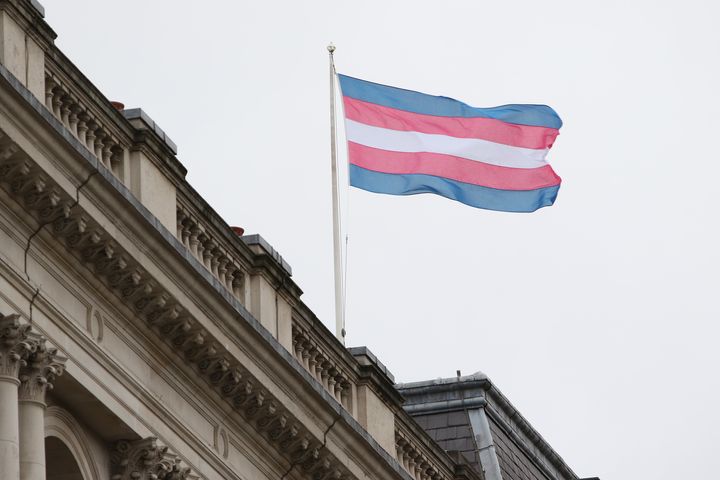A Terf’s Prayer
When I feel scared I speak the name of Mary Whitehouse—repeatedly but not quite aloud.

When I feel scared I speak the name of Mary Whitehouse—repeatedly but not quite aloud. My prayer goes something like this:
“O Mary! Save me Mary! Save me from the old man fondling his “titties” and squeaking like a pig!
Mary, save me from Sam Smith (you know which photo I’m talking about) Mary, I beg you, save the poor little children from Drag Queen Story Time and the poor little babies from Caba Baba rave (OMG!!)
Mary, please, save me from queer ideology in general and especially Mary, on my knees, save me from all the photos and films on Twitter and TikTok of repulsive AGP men impersonating women - things I have seen and can never unsee.”
For anyone under 50—who is Mary Whitehouse and why is she relevant to our struggle today which I will call terfism or as the Spanish say el terfismo?
In 1963 Mary Whitehouse was a middle-aged art teacher with ill-fitting dentures and a penchant for pea green frilly blouses. She was shocked by the sudden sexualisation of TV and particularly the effect it had on children and she wrote to complain about it to Sir Hugh Carelton Greene, the stuffed shirt who ran the BBC. Over the next three decades she became one of the most famous women’s and children’s rights activists and thousands of women, bishops and vicars supported her numerous campaigns.
She’s relevant to our present struggle because hers was similar: she saw that ‘permissive society’ simply meant men had easier sexual access to women and children; she was determined to fight it and she was ridiculed and smeared by the liberal intelligentsia. She was targeted with death threats, physical attacks and angry protests. Like Mary Whitehouse, terfs are hated for standing in the way of “progress” i.e. the sexual demands of men and especially hated for being middle-aged.
Carelton Greene was an early proponent of “queer theory” (aka the Persistent Prodding Penis) whereby he tried to break taboos—and he used the BBC to do it. He said: “We’re going to use this organisation to change the way the rest of the country thinks. We want them to see stuff they don’t like. We don’t really care if they complain.”
Mary Whitehouse despised the BBC and held Greene responsible for the moral collapse of the country. She was correct about the danger the BBC posed to children. One of its most famous TV presenters from the 1960s to the 1990s, Jimmy Savile, was revealed to have been a prolific child abuser. A review by Dame Janet Smith in 2016 concluded that he had sexually abused 72 people and had raped 8 people including an 8 year old at “virtually every one of the BBC premises at which he worked.” BBC staff were aware of complaints about Savile throughout the time he worked there but they did nothing.
Indeed paedophilia is built into the very fabric of the BBC headquarters: Broadcasting House on Portland Place boasts a 1931 sculpture by Eric Gill, an English artist who, according to his own diaries, fucked anything that moved including his young daughters and the family dog. His BBC sculpture depicts an old bloke pinning a young naked boy between his legs—the young boy could be 8 or 9 nine years old—the age at which Peter Tatchell, now an LGBT activist, said a child could consent to sex with an adult male. Peter Tatchell is of course a staunch defender of “trans” rights i.e male sexual access to children and in an excellent BBC documentary about Mary Whitehouse predictably described her as a “bigot.”
Carelton Greene despised Mary Whitehouse and refused to see her or address any of her complaints about his obsession with showing sexualised TV before 9pm, when children could watch it. He bought a repulsive portrait of her depicted as a five-breasted sort of starved pygmy child. He said he used it as a darts board. She ignored his insults and continued to write complaint letters and he finally gave up and resigned in 1969.
But Mary’s most important contribution to the struggle came in 1977 when she pointed out that an English paedophile lobby group called PIE received public money. The press got the story, and after her petition of 1.5 million signatures to the Prime Minister, a private member’s bill resulted in the Protection of Children Act 1978. Unbelievably, until that piece of legislation, child pornography— photographs of actual sexual abuse of children—was effectively legal. Hardly anyone is aware she did this, and none of her obituaries gives her credit for it.
She was quite litigious and once sued a scriptwriter of BBC sitcoms Johnny Speight for slander for calling her a “fascist.” She also sued the BBC because Johnny Speight made the accusation on a BBC show called The World at One. She was successful and awarded damages.
Mary Whitehouse fought for women’s and children’s rights for over thirty years and never lost her optimism. She said:
“It’s beginning to dawn on people that they don’t have to be passive about all this and that every individual person can do something about it - this is the exciting thing!”
O Mary, let me be more like you!
The generous support of our readers allows 4W to pay our all-female staff and over 50 writers across the globe for original articles and reporting you can’t find anywhere else. Like our work? Become a monthly donor!
Enter your email below to sign in or become a 4W member and join the conversation.
(Already did this? Try refreshing the page!)





Comments